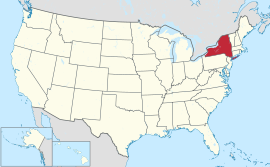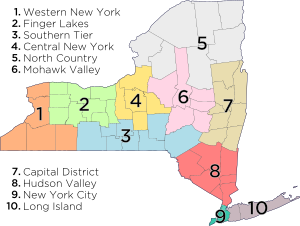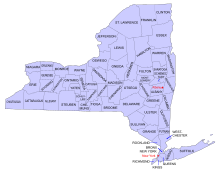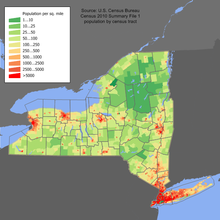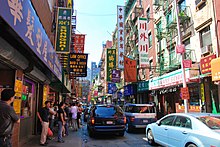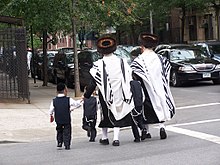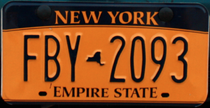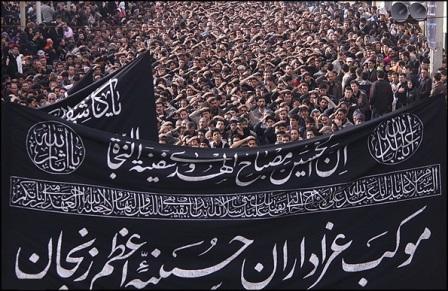- بازی کنسول
- بازی کامپیوتر
- بازی اکشن
- بازی استراژی
- بازی فکری
- بازیxbox
- تلفن همراه
- بازی اندروید
- نرم افزار موبایل
- ios
- نرم افزار
- نرم افزار ویندوز
- نرم افزار کاربردی
- نرم افزار پر کار برد
- دانلود فیلم وعکس
- دانلود فیلم
- دانلود عکس
- اطلاعات عمومی
- اطلاعات عمومی
- لطیفه
- دانلود موزیک
- دانلود موزیک بی کلام و باکلام
- دانلودموزیک ماه محرم
- انیمشین
- انیمیشن و کارتون
- مستند
- مستند های جالب
- دانلود اخبار
- دانلود اخبار به صورت پی دی اف
- بازی های فوق فشرده
- بازی های فوق فشرده برایpc
- دانلود نوحه
- دانلود نوحه محرم
- مقاله
- مقاله
- نمونه سوالات دوم تجربی
- نرم افزار کامپیوتر
- دانلود فصل اول سریال انیمیشنی لاروا Larva Season 01
- دانلود انیمیشن Iron Man and Captain America Heroes United 2014
- دانلود Cheat Engine 6.4 – نرم افزار هک بازی ها
- انلود FotMob v22.3 – نتایج و جدول تیم های فوتبال برای اندروید
- دانلود کلیپ تصویری سخنرانی استاد رائفی پور – غزه – نمایشگاه رسانه های دیجیتال – 7 شهریور 93
- دانلود بازی Subway Surfers 1.28.0 برای اندروید با پول بی نهایت
- دانلود بازی FX Football برای PC
- دانلود TeamViewer Enterprise 9.0.31064 – کنترل از راه دور کامپیوتر
- دانلود کتاب فیزیک هالیدی + حل المسائل – تمام ویرایش ها
- دانلود دعای عرفه با صدای مداحان مشهور
- میمون درختی
- دانلود آرامش بخش ترین آلبوم پیانو در جهان The most relaxing Piano album in the world…Ever
- دانلود برنامه Adobe Photoshop Express – ویندوز فون
- دانلود برنامه Voice Recorder Pro – ویندوز فون
- دانلود بازی Head Soccer – ویندوز فون
- QuarkXPress 11.0.0.1 طراحی گرافیکی و چاپ و نشر حرفه ای
- دانلود Party of Sin – بازی گروه بزهکار
- دانلود McAfee VirusScan Offline Update - SDAT 7823 - آپدیت آفلاین آنتی ویروس مکافی
- نرم افزار راه اندازی ویندوز Active Boot Disk Suite 10.0.3.1
- محافظت و ریکاوری فایل ها با Farstone TotalRecovery Pro 10.5.3
- دانلود فصل اول سریال آقای ربات – Mr Robot Season 1 2015
- نرم افزار ویرایش فایل های پی دی اف Icecream PDF Split and Merge Pro 2.17
- دانلود فیلم آموزشی معامله در بازار فارکس با استفاده از شاخص های حرفه ای بوسیله بهترین معامله گران
- نرم افزار مبدل فایل های ویدیویی iSkysoft Video Converter 4.5.3 – نسخه Mac
- دانلودبرنامه faststone maxview
New York
| State of New York | |||||
|---|---|---|---|---|---|
|
|||||
| Nickname(s): The Empire State | |||||
| Motto(s): Excelsior (Latin)[1] Ever upward |
|||||
| Official language | None | ||||
| Spoken languages | English (only) 72% Spanish 14% Others 14%[2] |
||||
| Demonym | New Yorker | ||||
| Capital | Albany | ||||
| Largest city | New York City | ||||
| Largest metro | New York City metropolitan area | ||||
| Area | Ranked 27th | ||||
| - Total | 54,556[3] sq mi (141,300 km2) |
||||
| - Width | 285 miles (455 km) | ||||
| - Length | 330 miles (530 km) | ||||
| - % water | 13.5 | ||||
| - Latitude | 40° 30′ N to 45° 1′ N | ||||
| - Longitude | 71° 51′ W to 79° 46′ W | ||||
| Population | Ranked 3rd | ||||
| - Total | 19,651,127 (2013 est)[4] | ||||
| - Density | 416.42/sq mi (159/km2) Ranked 7th |
||||
| Elevation | |||||
| - Highest point | Mount Marcy[5][6][7] 5,344 ft (1628.85 m) |
||||
| - Mean | 1,000 ft (304.8 m) | ||||
| - Lowest point | Atlantic Ocean[6][7] sea level |
||||
| Admission to Union | July 26, 1788 (11th) | ||||
| Governor | Andrew Cuomo (D) | ||||
| Lieutenant Governor | Robert Duffy (D) | ||||
| Legislature | New York Legislature | ||||
| - Upper house | State Senate | ||||
| - Lower house | State Assembly | ||||
| U.S. Senators | Chuck Schumer (D) Kirsten Gillibrand (D) |
||||
| U.S. House delegation | 21 Democrats, 6 Republicans (list) |
||||
| Time zone | Eastern: UTC -5/-4 | ||||
| Abbreviations | NY, US-NY | ||||
| Website | www.ny.gov | ||||
New York is a state in the Northeastern and Mid-Atlantic regions of the United States. New York is the 27th-most extensive, the third-most populous, and the seventh-most densely populated of the 50 United States. New York is bordered by New Jersey and Pennsylvania to the south and by Connecticut, Massachusetts, and Vermont to the east. The state has a maritime border with Rhode Island east of Long Island, as well as an international border with the Canadian provinces of Quebec to the north and Ontario to the west and north. The state of New York is often referred to as New York State to distinguish it from New York City, its largest city.
New York City, with a Census-estimated population of over 8.4 million in 2013,[8] is the most populous city in the United States and the nucleus of the premier gateway for legal immigration to the United States[9][10][11]—the New York City Metropolitan Area, one of the most populous urban agglomerations in the world.[12] New York City is also known for being the location of Ellis Island, the largest historical gateway for immigration in the history of the United States. A global power city,[13] New York City exerts a significant impact upon commerce, finance, media, art, fashion, research, technology, education, and entertainment. The home of the United Nations Headquarters,[14] New York City is an important center for international diplomacy[15] and has been described as the cultural and financial capital of the world.[16][17][18][19][20] New York City alone makes up over 40 percent of the population of New York State, while two-thirds of the state's population resides within the New York City Metropolitan Area, and Long Island is home to nearly 40% of New York State's population.[21][22][23][24] Both the state and New York City were named for the 17th century Duke of York, future King James II of England.
New York was inhabited by various tribes of Algonquian and Iroquoian speaking Native Americans at the time Dutch settlers moved into the region in the early 17th century. In 1609, the region was first claimed by Henry Hudson for the Dutch. Fort Nassau was built near the site of the present-day capital of Albany in 1614. The Dutch soon also settled New Amsterdam and parts of the Hudson River Valley, establishing the colony of New Netherland. The British annexed the colony from the Dutch in 1664. The borders of the British colony, the Province of New York, were quite similar to those of the present-day state.
About one third of all the battles of the Revolutionary War took place in New York. The state constitution was enacted in 1777. New York became the 11th state to ratify the United States Constitution, on July 26, 1788.
Contents
History
17th century
Henry Hudson's 1609 voyage marked the beginning of European involvement with the area. Sailing for the Dutch East India Company and looking for a passage to Asia, he entered the Upper New York Bay on September 11 of that year.[25] After his return word of his findings quickly spread and Dutch merchants began to explore the coast in search for profitable fur trade. During the 17th century, Dutch trading posts established for the trade of pelts from the Lenape, Iroquois, and other indigenous peoples expanded into the colony of New Netherland. The first of these trading posts were Fort Nassau (1614, near present-day Albany); Fort Orange (1624, on the Hudson River just south of the current city of Albany and created to replace Fort Nassau), developing into settlement Beverwijck (1647), and into what became Albany; Fort Amsterdam (1625, to develop into the town New Amsterdam which is present-day New York City); and Esopus, (1653, now Kingston). The success of the patroonship of Rensselaerswyck (1630), which surrounded Albany and lasted until the mid 19th century, was also a key factor in the early success of the colony. The English captured the colony during the Second Anglo-Dutch War and governed it as the Province of New York. The city of New York was recaptured by the Dutch once again in 1673 during the Third Anglo-Dutch War (1672–1674) and renamed New Orange, but returned to the English under the terms of the Treaty of Westminster a year later.[26]
American Revolution
The Sons of Liberty were organized in New York City during the 1760s, largely in response to the oppressive Stamp Act passed by the British Parliament in 1765. The Stamp Act Congress met in the city on October 19 of that year, composed of representatives from across the Thirteen Colonies who set the stage for the Continental Congress to follow. The Stamp Act Congress resulted in the Declaration of Rights and Grievances, which was the first written expression by representatives of the Americans of many of the rights and complaints later expressed in the United States Declaration of Independence, including the right to representative government.
The Capture of Fort Ticonderoga provided the cannon and gunpowder necessary to force a British withdrawal from the Siege of Boston in 1775.
New York endorsed the Declaration of Independence on July 9, 1776.[27] The New York State constitution was framed by a convention which assembled at White Plains on July 10, 1776, and after repeated adjournments and changes of location, terminated its labors at Kingston on Sunday evening, April 20, 1777, when the new constitution drafted by John Jay was adopted with but one dissenting vote. It was not submitted to the people for ratification. On July 30, 1777, George Clinton was inaugurated as the first Governor of New York at Kingston.
The first major battle of the American Revolutionary War after independence was declared—and the largest battle of the entire war—was fought in New York at the Battle of Long Island (a.k.a. Battle of Brooklyn) in August 1776. British victory made New York City their military and political base of operations in North America for the duration of the conflict, and consequently the center of attention for General George Washington's intelligence network.
The notorious British prison ships of Wallabout Bay saw more American combatants die of intentional neglect than were killed in combat in every battle of the war, combined.
The first of two major British armies were captured by the Continental Army at the Battle of Saratoga in 1777, influencing France to ally with the revolutionaries.

In an attempt to retain their sovereignty and remain an independent nation positioned between the new United States and British North America, four of the Iroquois Nations fought on the side of the British; only the Oneidas and their dependents the Tuscaroras allied themselves to the Americans.[28] The Sullivan Expedition of 1778 and 1779 destroyed nearly 50 Iroquois villages and adjacent croplands, forcing many refugees to British-held Niagara.[29] As allies of the British, the Iroquois were resettled in Canada after the war. In the treaty settlement, the British ceded most Indian lands to the new United States. Because New York made treaty with the Iroquois without getting Congressional approval, some of the land purchases are the subject of modern-day claims by the individual tribes. More than 5 million acres (20,000 km2) of former Iroquois territory was put up for sale in the years after the Revolutionary War, leading to rapid development in upstate New York.[30] As per the Treaty of Paris, the last vestige of British authority in the former Thirteen Colonies—their troops in New York City—departed in 1783, which was long afterwards celebrated as Evacuation Day.[31]
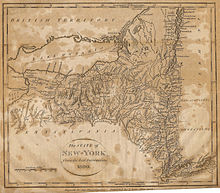
New York City was the national capital under the first attempt at a national government, the Articles of Confederation and Perpetual Union. That government was found to be insufficient, and prominent New Yorker Alexander Hamilton advocated for a new government that would included an executive, national courts, and the power to tax. Hamilton led the Annapolis Convention (1786) which called for the Philadelphia Convention that created the United States Constitution, and he also participated in. The new government would create a strong federal national government to replace the relatively weaker government by confederation of individual states. Following heated debate, which included the publication of the now quintessential constitutional interpretation—the Federalist Papers—as a series of installments in New York City newspapers, New York was the 11th state to ratify the United States Constitution, on July 26, 1788.[32] New York remained the national capital under the new constitution until 1790, and was the site of the inauguration of President George Washington, the drafting of United States Bill of Rights, and the first session of the United States Supreme Court. Hamilton's revival of the heavily indebted United States economy after the war and the creation of a national bank significantly contributed to New York City becoming the financial center of the new nation.
19th century

Transportation in western New York was difficult before canals were built in the early part of the 19th century. The Hudson and Mohawk Rivers could be navigated only as far as Central New York. While the Saint Lawrence River could be navigated to Lake Ontario, the way westward to the other Great Lakes was blocked by Niagara Falls, and so the only route to western New York was over land.
Governor DeWitt Clinton strongly advocated building a canal to connect the Hudson River with Lake Erie, and thus all of the Great Lakes. Work commenced in 1817, and the Erie Canal was finished in 1825. Packet boats traveled up and down the canal with sightseers and visitors on board.[33] The canal was considered an engineering marvel which opened up vast areas of New York to commerce and settlement. It enabled Great Lakes port cities such as Buffalo and Rochester to grow and prosper. It also connected the burgeoning agricultural production of the Midwest and shipping on the Great Lakes, with the port of New York City. Improving transportation, it enabled additional population migration to territories west of New York.
During the American Civil War, New York provided more than 370,000 soldiers to the Union armies. Over 53,000 New Yorkers died in service, roughly 1 of every 7 who served.[34]
September 11, 2001 attacks
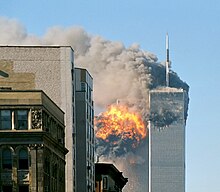
On September 11, 2001, two of four hijacked planes were flown into the former Twin Towers of the World Trade Center in Lower Manhattan. The towers collapsed. Also collapsing this day was 7 World Trade Center, which was not struck by a plane. The other buildings of the World Trade Center complex were damaged beyond repair and soon after demolished. The collapse of the Twin Towers caused extensive damage to surrounding buildings and skyscrapers in Lower Manhattan, and resulted in the deaths of 2,606 people, in addition to those on the planes. Since September 11, most of Lower Manhattan has been restored; many rescue workers and residents of the area have developed several life-threatening illnesses, and some have already died.[35]
A memorial at the site was opened to the public on September 11, 2011. A museum later opened at the site on March 21, 2014. At the time of its completion in 2014, the new One World Trade Center, formerly known as the Freedom Tower, will be the tallest building in the Western Hemisphere, at 1,776 feet;[36] while other skyscrapers are under construction at the site.
Hurricane Sandy, 2012
On October 29 and 30, 2012, Hurricane Sandy caused extensive destruction of the state's shorelines, ravaging portions of New York City and Long Island with record-high storm surge, with severe flooding and high winds causing power outages for hundreds of thousands of New Yorkers and leading to gasoline shortages and disruption of mass transit systems. The storm and its profound impacts have prompted the discussion of constructing seawalls and other coastal barriers around the shorelines of New York City and Long Island to minimize the risk of destructive consequences from another such event in the future.[38]
Immigration


New York City has been the largest port of entry for immigration into the United States since the early 19th century and continues as such. In the United States, although immigration acts had been passed, there was no formal routine for implementing immigration policy on a national level until the federal government assumed direct jurisdiction in 1890. Prior to this time the matter was delegated to the individual states then via contract between the states with the federal government. Most immigrants to New York would disembark at the bustling docks along the Hudson and East Rivers, in the eventual Lower Manhattan. On May 4, 1847 the New York State Legislature created the Board of Commissioners of Immigration to regulate immigration.[39]
The first permanent immigration depot in New York was established in 1855 at Castle Garden; a converted War of 1812 era fort located at the Battery at the tip of Manhattan, which is today in Battery Park. The first immigrants to arrive at the new depot were onboard three ships that had just been released from quarantine.Castle garden would serve as New York's immigrant depot until it closed on April 18, 1890 when the federal government assumed control over immigration. During that period of time more than 8 million immigrants passed through its doors (two out of every three U.S. immigrants).[40]
When the federal government assumed control over immigration it established the Bureau of Immigration which chose the three-acre Ellis Island in Upper New York Harbor. The island; already a federal possession had served as an ammunition depot. It was chosen due its relative isolation as an island yet it was still in close proximity to New York City and the rail lines of Jersey City, New Jersey, via a short ferry ride. The island needed improvements including expansion via land reclamation, prior to being used, so the federal government operated a temporary depot at the Barge Office at the Battery.[41]
Ellis Island opened on January 1, 1892, and operated as a central immigration center until the National Origins Act was passed in 1924, then the only immigrants to pass through there were displaced persons or war refugees. The island ceased all immigration processing on November 12, 1954 when the last person detained on the island, a Norwegian seaman named Arne Peterssen who had overstayed his shore leave was released. He left on the 10:15 a.m. Manhattan-bound ferry to return to his ship.
More than 12 million immigrants had passed through Ellis Island, between 1892 and 1954 and today, over 100 million Americans can trace their ancestry to the immigrants, who first arrived in America through Castle Clinton and Ellis Island, before settling throughout the United States.
Ellis Island was the subject of a contentious and long-running border dispute between New York State and the State of New Jersey over within whose borders the island lies. The issue was settled in 1998 by the U.S. Supreme Court which ruled that the original 3.3 acre island was New York State territory and that the balance of the 27.5 acres (11 ha) added after 1834 by landfill was in New Jersey.[42] The island was added to the National Park Service system in May 1965 by President Lyndon B. Johnson and is still owned by the Federal government as part of the Statue of Liberty National Monument. Ellis Island was opened to the public as a museum of immigration in 1990.[43]
Geography
New York covers 54,556 square miles (141,300 km2) and ranks as the 27th largest state by size.[3] The Great Appalachian Valley dominates eastern New York and contains the Lake Champlain Valley as its northern half and the Hudson Valley as its southern half within the state. The rugged Adirondack Mountains, with vast tracts of wilderness, lie west of the Lake Champlain Valley. The Hudson River begins near Lake Tear of the Clouds and flows south through the eastern part of the state without draining Lakes George or Champlain. Lake George empties at its north end into Lake Champlain, whose northern end extends into Canada, where it drains into the Richelieu River and then ultimately the Saint Lawrence River. Four of New York City's five boroughs are situated on three islands at the mouth of the Hudson River: Manhattan Island; Staten Island; and Long Island, which contains Brooklyn and Queens on its western end.
Most of the southern part of the state is on the Allegheny Plateau, which rises from the southeast to the Catskill Mountains. The western section of the state is drained by the Allegheny River and rivers of the Susquehanna and Delaware systems. The Delaware River Basin Compact, signed in 1961 by New York, New Jersey, Pennsylvania, Delaware, and the federal government, regulates the utilization of water of the Delaware system. The highest elevation in New York is Mount Marcy in the Adirondacks.[44]
New York's borders touch (clockwise from the west) two Great Lakes (Erie and Ontario, which are connected by the Niagara River); the provinces of Ontario and Quebec in Canada; Lake Champlain; three New England states (Vermont, Massachusetts, and Connecticut); the Atlantic Ocean, and two Mid-Atlantic states, New Jersey and Pennsylvania. In addition, Rhode Island shares a water border with New York. New York is the only state that touches both the Great Lakes and the Atlantic Ocean, and is the second-largest of the original Thirteen Colonies.
In contrast with New York City's urban atmosphere, the vast majority of the state's geographic area is dominated by farms, forests, rivers, mountains, and lakes. New York's Adirondack Park is the largest state park in the United States. It is larger than the Yellowstone, Yosemite, Grand Canyon, Glacier and Olympic National Parks combined.[45] New York established the first state park in the United States at Niagara Falls in 1885. Niagara Falls, on the Niagara River as it flows from Lake Erie to Lake Ontario, is a popular attraction.
Upstate and downstate are often used informally to distinguish New York City or its greater metropolitan area from the rest of New York State. The placement of a boundary between the two is a matter of great contention.[46] Unofficial and loosely defined regions of Upstate New York include the Southern Tier, which often includes the counties along the border with Pennsylvania,[47] and the North Country, which can mean anything from the strip along the Canadian border to everything north of the Mohawk River.[48]
Climate

In general, New York has a humid continental climate, though under the Köppen climate classification, New York City has a humid subtropical climate.[49] Weather in New York is heavily influenced by two continental air masses: a warm, humid one from the southwest and a cold, dry one from the northwest.
The winters are long and cold in the Plateau Divisions of the state. In the majority of winter seasons, a temperature of −13 °F (−25 °C) or lower can be expected in the northern highlands (Northern Plateau) and 5 °F (−15 °C) or colder in the southwestern and east-central highlands (Southern Plateau). The summer climate is cool in the Adirondacks, Catskills and higher elevations of the Southern Plateau.
The New York City/Long Island area and lower portions of the Hudson Valley have rather warm summers by comparison, with some periods of high, uncomfortable humidity. The remainder of New York State enjoys pleasantly warm summers, marred by only occasional, brief intervals of sultry conditions. Summer daytime temperatures usually range from the upper 70s to mid 80s °F (25 to 30 °C), over much of the state.
New York ranks 46th among the 50 states in the amount of greenhouse gases generated per person. This relative efficiency is primarily due to the state's higher rate of mass transit use.[50]
Monthly normal high and low temperatures for various New York cities (°F)[51] (Fahrenheit) City Jan Feb Mar Apr May Jun Jul Aug Sep Oct Nov Dec Albany max
min31
1334
1644
2557
3670
4678
5582
6080
5871
5060
3948
3136
20Binghamton max
min28
1531
1741
2553
3566
4673
5478
5976
5768
5057
4044
3133
21Buffalo max
min31
1833
1942
2654
3666
4875
5780
6278
6070
5359
4347
3436
24Lake Placid max
min27
532
840
1654
2966
3974
4878
5376
5169
4456
3444
2532
12Long Beach max
min39
2340
2448
3158
4069
4977
6083
6682
6475
5764
4554
3644
28New York City max
min38
2641
2850
3561
4471
5479
6384
6982
6875
6064
5053
4143
32Rochester max
min31
1733
1743
2555
3568
4677
5581
6079
5971
5160
4147
3336
23Syracuse max
min31
1434
1643
2456
3568
4677
5582
6080
5971
5160
4047
3236
21
Monthly normal high and low temperatures for various New York cities (°C) (Celsius) City Jan Feb Mar Apr May Jun Jul Aug Sep Oct Nov Dec Albany max
min−1
−111
−97
−414
221
826
1328
1627
1422
1016
49
−12
−7Binghamton max
min−2
−9−1
−85
−412
219
823
1226
1524
1420
1014
47
−11
−6Buffalo max
min−1
−81
−76
−312
219
924
1427
1726
1621
1215
68
12
−4Lake Placid max
min−3
−150
−134
−912
−219
423
926
1224
1121
713
17
−40
−11Long Beach max
min4
−54
−49
−114
421
925
1628
1928
1824
1418
712
27
−2New York City max
min3
−35
−210
216
722
1226
1729
2128
2024
1618
1012
56
0Rochester max
min−1
−81
−86
−413
220
825
1327
1626
1522
1116
58
12
−5Syracuse max
min−1
−101
−96
−413
220
825
1328
1627
1522
1116
48
02
−6Converted from Fahrenheit data (above)
State parks
New York has many state parks and two major forest preserves. Adirondack Park, roughly the size of the state of Vermont and the largest state park in the United States,[52] was established in 1892 and given state constitutional protection to remain "forever wild" in 1894. The park is larger than Yellowstone, Everglades, Glacier, and Grand Canyon national parks combined.[52] The thinking that led to the creation of the Park first appeared in George Perkins Marsh's Man and Nature, published in 1864.
The Catskill Park was protected in legislation passed in 1885,[53] which declared that its land was to be conserved and never put up for sale or lease. Consisting of 700,000 acres (2,800 km2) of land,[53] the park is a habitat for bobcats, minks and fishers. There are some 400 black bears living in the region.[citation needed] The state operates numerous campgrounds and there are over 300 miles (480 km) of multi-use trails in the Park.
The Montauk Point State Park boasts the 1797 Montauk Lighthouse, commissioned under President George Washington, which is a major tourist attraction on the easternmost tip of Long Island. Hither Hills park offers camping and is a popular destination with surfcasting sport fishermen.
National Parks
The State of New York is well represented in the National Park System with 22 national parks which received 16,349,381 visitors in 2011. In addition there are 4 National Heritage Areas, 27 National Natural Landmarks, 262 National Historic Landmarks and 5,379 listings on the National Register of Historic Places.
- Statue of Liberty National Monument includes Ellis Island and the Statue of Liberty. The statue designed by Frédéric Bartholdi, was a gift from France to the United States to mark the Centennial of the American Declaration of Independence and was dedicated in New York Harbor on October 28, 1886. It has since become one of the most iconic representations of the United States and the concept of democracy and freedom.
- African Burial Ground National Monument in Lower Manhattan (New York City) is the only National Monument dedicated to Americans of African ancestry. It preserves a site containing the remains of more than 400 Africans buried during the late 17th and 18th centuries in a portion of what was the largest colonial-era cemetery for people of African descent both free and enslaved. The site's excavation and study was called "the most important historic urban archeological project in the United States.
- Niagara Falls National Heritage Area was designated by Congress in 2008, it stretches from the western boundary of Wheatfield, New York to the mouth of the Niagara River on Lake Ontario, including the communities of Niagara Falls, Youngstown, and Lewiston and includes Niagara Falls State Park and Colonial Niagara Historic District. Though recognized as nationally significant, the area is not managed by the National Park Service.
- General Grant National Memorial is the final resting place of President Ulysses S. Grant, and is the largest mausoleum in North America.
- Hamilton Grange National Memorial preserves the home of Alexander Hamilton, Caribbean immigrant and orphan who rose to be a United States founding father and indispensable partner to George Washington.
- Theodore Roosevelt Birthplace National Historic Site is the birthplace and childhood home of President Theodore Roosevelt, the only US President born in New York City.
- Gateway National Recreation Area is over 26,000 acres (10,522 ha) of water, marshes, and shoreline at the entrance to New York Harbor, the majority of which lies within New York. It covers more area than two Manhattan Islands.
- Fire Island National Seashore is a United States National Seashore that protects a 26-mile (42 km) section of Fire Island, an approximately 30-mile (48 km) long barrier island separated from Long Island by the Great South Bay. The island is part of New York State's Suffolk County.
- Home of Franklin D. Roosevelt National Historic Site preserves the Springwood estate in Hyde Park, New York, United States. Springwood was the birthplace, lifelong home, and burial place of the 32nd President of the United States, Franklin D. Roosevelt. The National Historic Site was established in 1945.
- Saratoga National Historical Park preserves the site of the Battles of Saratoga, the first significant American military victory of the American Revolutionary War. Here in 1777, American forces met, defeated, and forced a major British Army to surrender, an event which led France to recognize the independence of the United States, and enter the war as a decisive military ally of the struggling Americans.
Regions
Due to its long history, the state of New York has several overlapping (and often conflicting) definitions of regions within the state. This is further exacerbated by the colloquial use of such regional labels. The New York State Department of Economic Development provides two distinct definitions of these regions. It divides the state into ten economic regions,[55] which approximately correspond to terminology used by local residents:
The Department of Economic Development also groups the counties into eleven regions for tourism purposes:[56]
- Chautauqua–Allegheny
- Niagara Frontier
- Finger Lakes
- Thousand Islands
- Central Region (formerly Central-Leatherstocking)
- Adirondack Mountains
- Capital District
- Catskill Mountains
- Hudson Valley
- New York City
- Long Island
Administrative divisions
New York is divided into 62 counties. Aside from the five counties of New York City, each of these counties is subdivided into towns and cities. Towns can contain incorporated villages or unincorporated hamlets. New York City is divided into five boroughs, each coterminous with a county.
Most populous counties
These are the ten counties with the largest populations as of 2010:[57]
- Kings County (Brooklyn): 2,504,700
- Queens County (Queens): 2,230,722
- New York County (Manhattan): 1,585,873
- Suffolk County: 1,493,350
- Bronx County (the Bronx): 1,385,108
- Nassau County: 1,339,532
- Westchester County: 949,113
- Erie County: 919,040
- Monroe County: 744,344
- Richmond County (Staten Island): 468,730
Cities and metropolitan areas
There are 62 cities in New York. The largest city in the state and the most populous city in the United States is New York City, which comprises five counties (boroughs): Bronx, New York (Manhattan), Queens, Kings (Brooklyn), and Richmond (Staten Island). New York City is home to more than two-fifths of the state's population. Albany, the sixth-largest city, is the state capital. The smallest city is Sherrill, New York, in Oneida County. Hempstead is the town with the largest population. If it were a city, it would be the second largest in the state, with over 700,000 residents.
|
| |||||||||
|---|---|---|---|---|---|---|---|---|---|
| Rank | Name | County | Pop. | ||||||
 New York City  Buffalo |
1 | New York City | multiple | 8,405,837[8] |  Rochester  Yonkers |
||||
| 2 | Buffalo | Erie | 261,310 | ||||||
| 3 | Rochester | Monroe | 210,565 | ||||||
| 4 | Yonkers | Westchester | 195,976 | ||||||
| 5 | Syracuse | Onondaga | 145,170 | ||||||
| 6 | Albany | Albany | 97,856 | ||||||
| 7 | New Rochelle | Westchester | 77,062 | ||||||
| 8 | Mount Vernon | Westchester | 67,292 | ||||||
| 9 | Schenectady | Schenectady | 66,135 | ||||||
| 10 | Utica | Oneida | 62,239 | ||||||
The following are the ten largest metropolitan areas in the state:[58]
- New York City (19,831,858 in NY/NJ/PA,[59] 12,368,525 in NY)
- Buffalo-Niagara Falls (1,135,509)
- Rochester (1,054,323)
- Albany and the Capital District (870,716)
- Poughkeepsie and the Hudson Valley (670,301)
- Syracuse (662,577)
- Utica-Rome (299,397)
- Binghamton (251,725)
- Kingston (182,493)
- Glens Falls (128,923)
Downstate New York (New York City, Long Island, and the southern portion of the Hudson Valley) can be considered to form the central core of the Northeast megalopolis, an urbanized region stretching from New Hampshire to Virginia.
The major cities of the state developed along the key transportation and trade routes of the early 19th century, including the Erie Canal and railroads paralleling it. Today, the New York Thruway acts as a modern counterpart to commercial water routes.[citation needed]
Demographics
| Historical population | |||
|---|---|---|---|
| Census | Pop. | %± | |
| 1790 | 340,120 | ||
| 1800 | 589,051 | 73.2% | |
| 1810 | 959,049 | 62.8% | |
| 1820 | 1,372,812 | 43.1% | |
| 1830 | 1,918,608 | 39.8% | |
| 1840 | 2,428,921 | 26.6% | |
| 1850 | 3,097,394 | 27.5% | |
| 1860 | 3,880,735 | 25.3% | |
| 1870 | 4,382,759 | 12.9% | |
| 1880 | 5,082,871 | 16.0% | |
| 1890 | 6,003,174 | 18.1% | |
| 1900 | 7,268,894 | 21.1% | |
| 1910 | 9,113,614 | 25.4% | |
| 1920 | 10,385,227 | 14.0% | |
| 1930 | 12,588,066 | 21.2% | |
| 1940 | 13,479,142 | 7.1% | |
| 1950 | 14,830,192 | 10.0% | |
| 1960 | 16,782,304 | 13.2% | |
| 1970 | 18,236,967 | 8.7% | |
| 1980 | 17,558,072 | −3.7% | |
| 1990 | 17,990,455 | 2.5% | |
| 2000 | 18,976,457 | 5.5% | |
| 2010 | 19,378,102 | 2.1% | |
| Est. 2013 | 19,651,127 | 1.4% | |
| Sources: 1910–2010 1790–1900[60] 2013 Estimate[61] |
|||
Population
The distribution of change in population growth is uneven in New York State; the New York City metropolitan area is growing considerably, along with Saratoga County, while most of Western New York is nearly stagnant. According to immigration statistics, the state is a leading recipient of migrants from around the globe. Between 2000 and 2005, immigration failed to surpass emigration, a trend that has been reversing since 2006. New York State lost two house seats in the 2011 congressional reapportionment, secondary to relatively slow growth when compared to the rest of the United States. In 2000 and 2005, more people moved from New York to Florida than from any one state to another.[62] However, New York State has the second largest international immigrant population in the country among the American states, at 4.2 million as of 2008; most reside in and around New York City, due to its size, high profile, vibrant economy, and cosmopolitan culture.
The United States Census Bureau estimates that the population of New York was 19,651,127 on July 1, 2013, a 1.4% increase since the 2010 United States Census.[4] In spite of the open land in the state, New York's population is very urban, with 92% of residents living in an urban area,[63] predominantly in the New York City metropolitan area.
Two-thirds of New York State's population resides within the New York City Metropolitan Area. New York City is the most populous city in the United States,[64][65] with an estimated record high of 8,336,697 residents as of 2012,[8] incorporating more immigration into the city than emigration since the 2010 United States Census.[66] More people live in New York City than in the next two most populous U.S. cities (Los Angeles[67] and Chicago[68]) combined, which, according to the United States Census Bureau, is estimated to total 6,572,655. Long Island alone accounted for a Census-estimated 7,740,208 residents in 2013, representing 39.4% of New York State's population.[21][22][23][24]
Racial and ancestral makeup
According to the U.S. Census Bureau, the 2010 racial makeup of New York State was as follows:[73]
- White American – 65.7%
- Black or African American – 15.9%
- Asian American – 7.3% (3.0% Chinese, 1.6% Indian, 0.7% Korean, 0.5% Filipino, 0.3% Pakistani, 0.3% Bangladeshi, 0.2% Japanese, 0.1% Vietnamese)
- Multiracial Americans – 3.0%
- Native American/American Indian – 0.6%
- Some other race - 7.5%
| [hide]Racial composition | 1950[74] | 1970[74] | 1990[74] | 2000[75] | 2010[76] |
|---|---|---|---|---|---|
| White | 93.5% | 86.8% | 74.4% | 67.9% | 65.8% |
| Black | 6.2% | 11.9% | 15.9% | 15.9% | 15.9% |
| Asian | 0.2% | 0.7% | 3.9% | 5.5% | 7.3% |
| Native | 0.1% | 0.2% | 0.3% | 0.4% | 0.6% |
| Native Hawaiian and other Pacific Islander |
– | – | – | 0.1% | 0.1% |
| Other race | – | 0.4% | 5.5% | 7.1% | 7.4% |
| Two or more races | – | – | – | 3.1% | 3.0% |
In 2004, the major ancestry groups in New York State were Hispanic and Latino Americans (17.6%), African American (15.8%), Italian (14.4%), Irish (12.9%), German (11.1%) and English (6%).[77] According to a 2010 estimate, 21.7% of the population is foreign-born.[73]
The state's most populous racial group, non-Hispanic white, has declined from 94.6% in 1940 to 58.3% in 2010.[73][78] As of 2011, 55.6% of New York's population younger than age 1 were minorities.[79] New York's robustly increasing Jewish population was the highest among states both by absolute number and by percentage in 2012,[80] driven by the rapidly growing Orthodox Jewish population,[81] particularly in Brooklyn and the Hudson Valley.
New York is home to the largest African-American population and the second largest Asian-American population in the United States, although New York's Black population declined between 2000 and 2010.[82] In addition it is home to the largest Puerto Rican, Dominican, and Jamaican American populations in the continental United States. The New York City neighborhood of Harlem has historically been a major cultural capital for African-Americans of sub-Saharan descent, and Bedford-Stuyvesant in Brooklyn is the largest such population in the United States.
Queens, also in New York City, is home to the state's largest Asian-American population and is the most ethnically diverse county in the United States, as well as being the most ethnically diverse urban area in the world.[83][84] The Chinese population constitutes the fastest-growing nationality in New York State; multiple satellites of the original Manhattan Chinatown (紐約華埠), in Brooklyn (布鲁克林華埠), and around Flushing, Queens (法拉盛華埠), are thriving as traditionally urban enclaves, while also expanding rapidly eastward into suburban Nassau County (拿騷縣),[85] on Long Island (長島),[86] as New York State has become the top destination for new Chinese immigrants, and large-scale Chinese immigration continues into New York.[69][70][71][72][87] Long Island, including Queens and Nassau County, is also home to several Little Indias and a large Koreatown (롱 아일랜드 코리아타운), with large and growing attendant populations of Indian Americans and Korean Americans, respectively; while Brooklyn is receiving large numbers of both West Indian as well as Asian Indian immigrants. Queens is also home to the largest Andean (Colombian, Ecuadorian, Peruvian, and Bolivian) populations in the United States.
In the 2000 Census, Italian Americans, with the largest number among the American states, made up the largest ancestral group in Staten Island and Long Island, followed by Irish Americans. Albany and the Mohawk Valley also have populations with many of Irish-American and Italian-American descent. In Buffalo and western New York, German Americans comprise the largest ancestry; while in the North Country of New York, French Canadians represent the leading ethnic descent, given its proximity to Quebec. Americans of English ancestry are present throughout all of upstate New York.
6.5% of New York's population were under 5 years of age, 24.7% under 18, and 12.9% were 65 or older. Females made up 51.8% of the population.
Languages
In 2010, the most common American English dialects spoken in New York, besides General American English, were the New York City area dialect (including New York Latino English and North Jersey English), Hudson Valley English (including the Western New England accent around Albany), and Inland Northern American English in Buffalo and western New York State. As many as 800 languages are spoken in New York City,[88][89] making it the most linguistically diverse city in the world.[90]
As of 2010, 70.72% (12,788,233) of New York residents aged five and older reported speaking only English at home, while 14.44% (2,611,903) spoke Spanish, 2.61% (472,955) Chinese (which includes Cantonese and Mandarin), 1.20% (216,468) Russian, 1.18% (213,785) Italian, 0.79% (142,169) French Creole, 0.75% (135,789) French, 0.67% (121,917) Yiddish, 0.63% (114,574) Korean, and Polish was spoken by 0.53% (95,413) of the population over the age of five. In total, 29.28% (5,295,016) of New York's population aged five and older reported speaking a language other than English.[2]
| Language | Percentage of population (as of 2010)[2] |
|---|---|
| Spanish | 14.44% |
| Chinese (including Cantonese and Mandarin) | 2.61% |
| Russian | 1.20% |
| Italian | 1.18% |
| French Creole | 0.79% |
| French | 0.75% |
| Yiddish | 0.67% |
| Korean | 0.63% |
| Polish | 0.53% |
| Bengali | 0.43% |
Religion
In 2000, Catholics comprised more than 40% of the population in New York; Protestants were 30% of the population, Jews 8.4%, Muslims 3.5%, Buddhists 1%, and 13% claimed no religious affiliation (irreligious, agnostics, and atheists).
In 2010, the Association of Religion Data Archives (ARDA) reported that the largest denominations were the Catholic Church with 6,286,916; Orthodox Judaism with 588,500; Islam with 392,953; and the United Methodist Church with 328,315 adherents.[92]
LGBT
Roughly 3.8 per cent of the state's adult population self-identifies as lesbian, gay, bisexual, or transgender. This constitutes a total LGBT adult population of 570,388 individuals.[93] In 2010, the number of same-sex couple households stood at roughly 48,932.[94] New York was the fifth state to license same-sex marriages, after New Hampshire. Michael Bloomberg, the Mayor of New York City, stated that "same sex-marriages in New York City have generated an estimated $259 million in economic impact and $16 million in City revenues" in the first year after the enactment of the Marriage Equality Act".[95]Same-sex marriages in New York were legalized on June 24, 2011 and were authorized to take place beginning 30 days thereafter.[96]
Economy
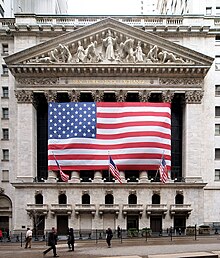


New York's gross state product in 2010 was $1.16 trillion, ranking third in size behind the larger states of California and Texas.[98] If New York were an independent nation, it would rank as the 16th largest economy in the world behind Turkey. Its 2007 per capita personal income was $46,364, placing it sixth in the nation behind Maryland, and eighth in the world behind Ireland. New York's agricultural outputs are dairy products, cattle and other livestock, vegetables, nursery stock, and apples. Its industrial outputs are printing and publishing, scientific instruments, electric equipment, machinery, chemical products, and tourism. Sand, gravel, asphalt, and cement production are also significant industries in the state.
New York City's financial district, anchored by Wall Street in Lower Manhattan, has been called the world's leading financial center[99][100][101] and is home to the New York Stock Exchange, the world's largest stock exchange by total market capitalization of its listed companies.[102] Wall Street, a metonym for New York City's securities industry, provided approximately $26.7 billion in bonuses, and 16 percent of revenue, or $10.3 billion, for New York State in 2013.[103][104] Many of the world's largest media conglomerates are also based in the city.
Silicon Alley, centered in New York City, has evolved into a metonym for the sphere encompassing the New York metropolitan region's high technology and entrepreneurship ecosystem; in the first half of 2014, New York State generated nearly US$1.8 billion in venture capital investment.[105] High tech industries including digital media, biotechnology, software development, game design, and other fields within information technology are growing, bolstered by New York City's position at the terminus of several transatlantic fiber optic trunk lines,[106] its intellectual capital, as well as its growing outdoor wireless connectivity.[107]
Creative industries such as new media, advertising, fashion, design and architecture account for a growing share of employment, with New York City possessing a strong competitive advantage in these industries.[108]
Manhattan contained approximately 520 million square feet (48.1 million m²) of office space in 2013,[109] making it the largest office market in the United States,[110] while Midtown Manhattan is the largest central business district in the nation.[111]
Lower Manhattan is the third largest central business district in the United States and is home to the New York Stock Exchange, on Wall Street, and the NASDAQ, at 165 Broadway, representing the world's largest and second largest stock exchanges, respectively, when measured both by overall average daily trading volume and by total market capitalization of their listed companies in 2013.[97] Investment banking fees on Wall Street totaled approximately US$40 billion in 2012,[112] while in 2013, senior New York City bank officers who manage risk and compliance functions earned as much as US$324,000 annually.[113]
New York exports a wide variety of goods such as foodstuffs, commodities, minerals, computers and electronics, cut diamonds, and automobile parts. In 2007, the state exported a total of $71.1 billion worth of goods, with the five largest foreign export markets being Canada ($15 billion), United Kingdom ($6 billion), Switzerland ($5.9 billion), Israel ($4.9 billion), and Hong Kong ($3.4 billion). New York's largest imports are oil, gold, aluminum, natural gas, electricity, rough diamonds, and lumber.
Albany, Saratoga County, and the Hudson Valley are major centers of nanotechnology and integrated microchip circuit manufacturing, while the Rochester area is important in the field of photographic processing and imaging. The state also has a large manufacturing sector that includes printing and the production of garments, furs, railroad equipment and bus line vehicles; many of these industries are concentrated in Upstate regions.
New York is a major agricultural producer, ranking among the top five states for agricultural products such as dairy, apples, cherries, cabbage, potatoes, onions, and maple syrup. The state is the largest producer of cabbage in the U.S. The state has about a quarter of its land in farms and produced US$3.4 billion in agricultural products in 2001. The south shore of Lake Ontario provides the right mix of soils and microclimate for many apple, cherry, plum, pear and peach orchards. Apples are also grown in the Hudson Valley and near Lake Champlain.
New York is the nation's third-largest grape-producing state, and second-largest wine producer by volume, behind California. The south shore of Lake Erie and the southern Finger Lakes hillsides have many vineyards. In addition, the North Fork of Long Island developed vineyards, production and visitors' facilities in the last three decades of the 20th century. In 2004, New York's wine and grape industry brought US$6 billion into the state economy.
The state has 30,000 acres (120 km2) of vineyards, 212 wineries, and produced 200 million bottles of wine in 2004. A moderately sized saltwater commercial fishery is located along the Atlantic side of Long Island. The principal catches by value are clams, lobsters, squid, and flounder.
Transportation
 |
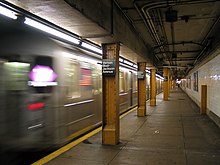
New York has one of the most extensive and one of the oldest transportation infrastructures in the country. Engineering difficulties because of the terrain of the state and the unique issues of the city brought on by urban crowding have had to be overcome perennially. Population expansion of the state generally followed the path of the early waterways, first the Hudson River and then the Erie Canal. Today, railroad lines and the New York State Thruway follow the same general route. The New York State Department of Transportation is often criticized for how they maintain the roads of the state in certain areas and for the fact that the tolls collected along the roadway have long passed their original purpose. Until 2006, tolls were collected on the Thruway within The City of Buffalo. They were dropped late in 2006 during the campaign for Governor (both candidates called for their removal).
In addition to New York City's famous mass transit subway, four suburban commuter railroad systems enter and leave the city: the Long Island Rail Road, Metro-North Railroad, Port Authority Trans-Hudson, and five of New Jersey Transit's rail lines. Many other cities have urban and regional public transportation. In Buffalo, the Niagara Frontier Transportation Authority runs the Buffalo Metro Rail light-rail system; in Rochester, the Rochester Subway operated from 1927 until 1956 but has fallen into disuse.
The New York State Department of Motor Vehicles (NYSDMV or DMV) is the governmental agency responsible for registering and inspecting automobiles and other motor vehicles as well as licensing drivers in the State of New York. As of 2008, the NYSDMV has 11,284,546 drivers licenses on file[114] and 10,697,644 vehicle registrations in force.[115] All gasoline powered vehicles registered in New York State must get an emissions inspection every 12 months. Diesel powered vehicles with a Gross Weight Rating over 8 500 lb that are registered in the NY Metropolitan Area must get an annual emissions inspection. All vehicles registered in NYS must get an annual safety inspection.
Portions of the transportation system are intermodal, allowing travelers to easily switch from one mode of transportation to another. One of the most notable examples is AirTrain JFK which allows rail passengers to travel directly to terminals at John F. Kennedy International Airport.
In May 2009, the New York City Department of Transportation under the control of Transportation Commissioner Janette Sadik-Khan banned cars from Times Square in a move designed to improve traffic flow and reduce pollution and pedestrian accidents.[116] On February 11, 2010, Mayor Michael Bloomberg announced that the pedestrian plazas would remain permanent.[117]
Law, government and politics
Government
The Government of New York is the governmental structure of the State of New York as established by the New York State Constitution. It is composed of three branches: executive, legislative and judicial.
The New York State Legislature is bicameral and consists of the New York State Senate and the New York State Assembly. The Assembly consists of 150 members; the Senate varies in its number of members, but currently has 63. The Legislature is empowered to make laws, subject to the Governor's power to veto a bill. However, the veto may be overridden by the Legislature if there is a two-thirds majority in favor of overriding in each House. The permanent laws of a general nature are codified in the Consolidated Laws of New York.
The Governor is the State's chief executive and is assisted by the Lieutenant Governor. Both are elected on the same ticket. Additional elected officers include the Secretary of State, the Attorney General, and the Comptroller. There are also several state government departments.
The highest court of appeal in the New York State Unified Court System is the Court of Appeals whereas the primary felony trial courts are the Supreme Court and the county courts (outside of New York City). The Supreme Court also acts as the intermediate appellate court for many cases, and the local courts handle a variety of other matters including small claims, traffic ticket cases and local zoning matters, and are the starting point for all criminal cases. The New York City Courts make up the largest local court system.
The state is divided into counties, cities, towns, and villages, which are all municipal corporations with their own government, as well as various corporate entities that serve single purposes that are also local governments, such as school, fire districts, and New York state public-benefit corporations, frequently known as authorities or development corporations. It also has 10 Indian reservations. Each municipal corporation is granted varying home rule powers as provided by the New York Constitution.
Federal representation
The State of New York sends 27 members to the House of Representatives[118] in addition to its two United States Senators. As of the 2000 census and the redistricting for the 2002 elections, the state had 29 members in the House, but the representation was reduced to 27 in 2013 due to the state's slower overall population growth relative to the overall national population growth.[119] From 2016 New York will have 29 electoral votes in national presidential elections (a drop from its peak of 47 votes from 1933 to 1953).
New York is represented by Chuck Schumer and Kirsten Gillibrand in the United States Senate and has the nation's third equal highest number of congressional districts, equal with Florida and behind California's 53 and Texas's 36.
Politics
| Year | Democratic | Republican | |||
|---|---|---|---|---|---|
| 2012 | 63.35% | 4,485,877 | 35.17% | 2,490,496 | |
| 2008 | 62.88% | 4,804,945 | 36.03% | 2,752,771 | |
| 2004 | 58.37% | 4,314,280 | 40.08% | 2,962,567 | |
| 2000 | 60.21% | 4,107,907 | 35.23% | 2,403,374 | |
| 1996 | 59.47% | 3,756,177 | 30.61% | 1,933,492 | |
| 1992 | 49.73% | 3,444,450 | 33.88% | 2,346,649 | |
| 1988 | 51.62% | 3,347,882 | 47.52% | 3,081,871 | |
| 1984 | 45.83% | 3,119,609 | 53.84% | 3,664,763 | |
| 1980 | 43.99% | 2,728,372 | 46.66% | 2,893,831 | |
| 1976 | 51.95% | 3,389,558 | 47.52% | 3,100,791 | |
| 1972 | 41.21% | 2,951,084 | 58.54% | 4,192,778 | |
| 1968 | 49.76% | 3,378,470 | 44.30% | 3,007,932 | |
| 1964 | 68.56% | 4,913,156 | 31.31% | 2,243,559 | |
| 1960 | 52.53% | 3,830,085 | 47.27% | 3,446,419 | |
In the last few decades, New York State has generally supported candidates belonging to the Democratic Party in national elections. Democratic presidential candidate Barack Obama won New York State by 25 percentage points in 2008, a bigger margin than John Kerry in 2004. New York City is a major Democratic stronghold with liberal politics. Many of the state's other urban areas, such as Albany, Buffalo, Rochester, and Syracuse are also Democratic. Rural upstate New York, however, is generally more conservative than the cities and tends to favor Republicans. Heavily populated suburban areas downstate, such as Westchester County and Long Island, have swung between the major parties over the past 25 years, but more often than not support Democrats.
New York City is the most important source of political fundraising in the United States for both major parties. Four of the top five zip codes in the nation for political contributions are in Manhattan. The top zip code, 10021 on the Upper East Side, generated the most money for the 2000 presidential campaigns of both George W. Bush and Al Gore.[120]
The state has a strong imbalance of payments with the federal government. New York State receives 82 cents in services for every $1 it sends in taxes to the federal government in Washington.[121] The state ranks near the bottom, in 42nd place, in federal spending per tax dollar.[122]
Education
The University of the State of New York oversees all public primary, middle-level, and secondary education in the state, while the New York City Department of Education manages the public school system in New York City. In 1894, reflecting general racial discrimination, the state passed a law that allowed communities to set up schools for children of African-American descent. In 1900, the state passed another law requiring integrated schools.[123]
At the post-secondary level, the statewide public university system is the State University of New York commonly referred to as SUNY. New York City also has its own City University of New York which is additionally funded by the city. The SUNY system consists of 64 community colleges, technical colleges, undergraduate colleges, and doctoral-granting institutions including several universities. The four SUNY university centers, offering a wide array of academic programs, are the University at Albany, Binghamton University, the University at Buffalo, and Stony Brook University.
In addition there are many notable private universities such as New York Institute of Technology, New York University, and the oldest Catholic institution in the Northeast, Fordham University. New York is home to both Columbia University in New York City and Cornell University in Ithaca, making it the only state to contain more than one Ivy League school. Syracuse University is located in the city of Syracuse in Central New York. West Point, the service academy of the U.S. Army, is located just south of Newburgh, on the banks of the Hudson River.
During the 2007–2008 school year, New York spent more per pupil on public education than any other state.[124]
Sports
New York hosted the 1932 and 1980 Winter Olympics at Lake Placid. The 1980 Games are known for the USA–USSR hockey game dubbed the "Miracle on Ice" in which a group of American college students and amateurs defeated the heavily favored Soviet national ice hockey team 4–3 and went on to win the gold medal against Finland. Along with St. Moritz, Switzerland and Innsbruck, Austria, Lake Placid is one of the three cities to have hosted the Winter Olympic Games twice. New York City bid to host the 2012 Summer Olympics but lost to London.
New York is the home of one National Football League team, the Buffalo Bills (based in the suburb of Orchard Park). Although the New York Giants and New York Jets represent the New York metropolitan area and were previously located in New York City, they play in MetLife Stadium, located in East Rutherford, New Jersey. The Meadowlands stadium hosted Super Bowl XLVIII in 2014, in which New York and New Jersey will share hosting duties. There was much controversy over several proposals for a new New York Jets football stadium. The owners of the New York Jets were willing to split the $1.5 billion cost of building a new football stadium over Manhattan's West Side rail yards, but the proposal never came to fruition.
New York also has two Major League Baseball teams, the New York Yankees (based in the Bronx) and the New York Mets (based in Queens). New York is home to three National Hockey League franchises: the New York Rangers in Manhattan, the New York Islanders on Long Island and the Buffalo Sabres in Buffalo. New York has two National Basketball Association teams, the New York Knicks in Manhattan, and the Brooklyn Nets in Brooklyn. There are a variety of minor league teams that can be found throughout the State of New York, such as the Long Island Ducks. New York will be the home of a Major League Soccer franchise, New York City FC, starting in 2015. Although the New York Red Bulls represent the New York metropolitan area, they play in Red Bull Arena in Harrison, New Jersey.
| New York State major league professional sports teams | ||
|---|---|---|
| Club | Sport | League |
| Buffalo Bills | Football | National Football League |
| Brooklyn Nets | Basketball | National Basketball Association |
| New York Knicks | Basketball | National Basketball Association |
| New York City FC | Soccer | Major League Soccer |
| Buffalo Sabres | Ice hockey | National Hockey League |
| New York Islanders | Ice Hockey | National Hockey League |
| New York Rangers | Ice Hockey | National Hockey League |
| New York Mets | Baseball | Major League Baseball |
| New York Yankees | Baseball | Major League Baseball |
See also
- Index of New York-related articles
- Outline of New York – organized list of topics about New York
References
- "New York State Motto". New York State Library. January 29, 2001. Archived from the original on June 8, 2007. Retrieved November 16, 2007.
- "New York". Modern Language Association. Retrieved August 6, 2013.
- "Land and Water Area of States (2000)". Infoplease.com. Retrieved April 11, 2008. Note: This area is based on U.S. Census Bureau figures. Other sources such as The World Almanac and the Rand McNally World Atlas use an area of 49,576 square miles (128,400 km2), which would rank the state 30th.
- "Table 1. Annual Estimates of the Population for the United States, Regions, States, and Puerto Rico: April 1, 2010 to July 1, 2013" (CSV). 2013 Population Estimates. United States Census Bureau, Population Division. December 30, 2013. Retrieved January 6, 2014.
- "Marcy". NGS data sheet. U.S. National Geodetic Survey. Retrieved October 20, 2011.
- "Elevations and Distances in the United States". United States Geological Survey. 2001. Retrieved October 24, 2011.
- Elevation adjusted to North American Vertical Datum of 1988.
- Michael Howard Saul (March 27, 2014). "New York City Population Hits Record High". The Wall Street Journal. Retrieved August 2, 2014.
- "Yearbook of Immigration Statistics: 2013 Lawful Permanent Residents Supplemental Table 2". U.S. Department of Homeland Security. Retrieved August 2, 2014.
- "Yearbook of Immigration Statistics: 2012 Supplemental Table 2". U.S. Department of Homeland Security. Retrieved August 2, 2014.
- "Yearbook of Immigration Statistics: 2011 Supplemental Table 2". U.S. Department of Homeland Security. Retrieved August 2, 2014.
-
- "World's Largest Urban Areas [Ranked by Urban Area Population]". Rhett Butler. 2003–2006. Retrieved August 2, 2014.
- "Largest Cities of the World – (by metro population)". Woolwine-Moen Group d/b/a Graphic Maps. Retrieved August 2, 2014.
- "GLOBAL POWER CITY INDEX 2009". The Mori Memorial Foundation. Retrieved August 2, 2014.
- "United Nations Visitors Centre". United Nations. 2011. Retrieved August 2, 2014.
- "Office of the Mayor Commission for the United Nations, Consular Corps and Protocol". The City of New York. 2012. Retrieved August 2, 2014.
- "Consulate General of Iceland New York Culture". Consulate General of Iceland New York. Retrieved August 2, 2014.
- "Consulate of Latvia in New York". Consulate of Latvia. Retrieved February 17, 2013.
- "Introduction to Chapter 14: New York City (NYC) Culture". The Weissman Center for International Business Baruch College/CUNY 2011. Retrieved August 2, 2014.
- "New York, Culture Capital of the World, 1940–1965 / edited by Leonard Wallock ; essays by Dore Ashton ... [et al.]". NATIONAL LIBRARY OF AUSTRALIA. Retrieved August 2, 2014.
- "Top 8 Cities by GDP: China vs. The U.S.". Business Insider, Inc. July 31, 2011. Retrieved August 2, 2014.
- "Kings County, New York QuickFacts". U.S. Census Bureau. Retrieved August 2, 2014.
- "Queens County, New York QuickFacts". U.S. Census Bureau. Retrieved August 2, 2014.
- "Nassau County, New York QuickFacts". U.S. Census Bureau. Retrieved August 2, 2014.
- "Suffolk County, New York QuickFacts". U.S. Census Bureau. Retrieved August 2, 2014.
- Nevius, Michelle and James, "New York's many 9/11 anniversaries: the Staten Island Peace Conference", Inside the Apple: A Streetwise History of New York City, September 8, 2008. Retrieved September 24, 2012.
- Scheltema, Gajus and Westerhuijs, Heleen (eds.),Exploring Historic Dutch New York. Museum of the City of New York/Dover Publications, New York (2011). ISBN 978-0-486-48637-6
- "Declaration of Independence". history.com. Archived from the original on April 9, 2008. Retrieved April 10, 2008.
- Alan Taylor (2006). The Divided Ground: Indians, Settlers, and the Northern Borderland of the American Revolution. Knopf. ISBN 978-0-679-45471-7.
- "Sullivan/Clinton Interactive Map Set". Retrieved August 30, 2010.
- Chen, David W. Battle Over Iroquois Land Claims Escalates The New York Times. May 16, 2000. . Retrieved April 11, 2008.
- "Happy Evacuation Day". New York City Department of Parks and Recreation. Retrieved April 12, 2008.
- "New York's Ratification". The U.S. Constitution Online. Retrieved April 10, 2008.
- "The Erie Canal: A Brief History". New York State Canals. Retrieved April 10, 2008.
- Phisterer, Frederick, New York in the War of the Rebellion, 1861 To 1865, Albany: Weed, Parsons and Co., 1890, p. 88.
- Edelman, Susan (January 6, 2008). "Charting post-9/11 deaths". Retrieved January 22, 2012.
- Katia Hetter (November 12, 2013). "It's official: One World Trade Center to be tallest U.S. skyscraper". CNN. Retrieved November 12, 2013.
- Mary Johnson (October 29, 2012). "VIDEO: Dramatic Explosion at East Village Con Ed Plant". Copyright © 2009–2012, DNAinfo.com. All Rights Reserved. Retrieved December 2, 2012.
- Robert S. Eshelman (November 15, 2012). "ADAPTATION: Political support for a sea wall in New York Harbor begins to form". © 1996–2012 E&E Publishing, LLC. Retrieved December 2, 2012.
- "Castle Garden as An Immigrant Depot:1855–1890" (PDF). National Park Service. Retrieved September 9, 2013.
- "Castle Clinton". National Park Service. August 22, 2013. Retrieved September 9, 2013.
- Vincent J. Cannato: American Passage: The History of Ellis Island. p.50: Harper Collins (2009) ISBN 0060742739
- Linda Greenhouse (May 27, 1998). "The Ellis Island Verdict: The Ruling". The New York Times. Retrieved September 5, 2013.
- "Statue Of Liberty National Monument". Nps.gov. Retrieved September 9, 2013.
- "Elevations and Distances in the United States". U.S Geological Survey. April 29, 2005. Retrieved November 6, 2006.
- About the Adirondack Park, Adirondack Park Agency. Retrieved July 1, 2009.
- Eisenstadt, Peter, ed. (2005). The Encyclopedia of New York State. Syracuse University Press. p. 1619. ISBN 978-0-8156-0808-0.
- Eisenstadt, Peter, ed. (2005). The Encyclopedia of New York State. Syracuse University Press. p. 1437. ISBN 978-0-8156-0808-0.
- Eisenstadt, Peter, ed. (2005). The Encyclopedia of New York State. Syracuse University Press. ISBN 978-0-8156-0808-0.
- "Climate of New York". New York State Climate Office – Cornell University. Retrieved April 10, 2008.
- The New York Post (June 3, 2007). "A Breath of Fresh New York Air". Retrieved June 6, 2007.[dead link]
- "Typical High and Low Temperatures For Various New York Cities". US Travel Weather. Retrieved March 24, 2010.
- Largest Park Area in the Contiguous US Remains Open to Visitors, Thursday, October 3, 2013. Regional Office of Sustainable Tourism / Lake Placid CVB. Retrieved 26 July 2014.
- "Catskill Park History". catskillpark.org. Archived from the original on July 5, 2008. Retrieved April 11, 2008.
- "Statue of Liberty". World Heritage. UNESCO. Retrieved November 24, 2013.
- "Age/sex/race in New York State: Based on Census 2010". Retrieved May 15, 2012.
- "Map of eleven regions". Visitnewyorkstate.net. Retrieved October 2, 2010.
- "State & County QuickFacts New York". United States Census Bureau. Retrieved November 14, 2013.
- "2010 Census National Summary File of Redistricting Data – Population and Housing Occupancy Status: 2010 – United States – Metropolitan Statistical Area; and for Puerto Rico". 2010 United States Census. United States Census Bureau, Population Division. April 14, 2011. Retrieved March 14, 2012.
- "Geographic area,"April 1, 2010",,Population estimates (as of July 1),, ,,,Census,Estimates base,2010,2011,2012". U.S. Census Bureau. Retrieved November 12, 2013.
- "New York: 2000 (Population and Housing Unit Counts)" (PDF). 2000 United States Census. United States Census Bureau. 2000. Retrieved September 18, 2010. (page 1 of the document, page 31 of the file)
- "Table 1. Annual Estimates of the Population for the United States, Regions, States, and Puerto Rico: April 1, 2010 to July 1, 2013". Retrieved January 1, 2014.
- "Domestic Migration Flows for States from the 2005 ACS" (Microsoft Word). Archived from the original on October 25, 2007. Retrieved October 19, 2007.
- Timothy S. Parker (September 10, 2010). "New York Fact Sheet: NY agriculture income population food education employment farms top commodities exports counties financial indicators poverty organic farming farm income America USDA". Ers.usda.gov. Retrieved October 2, 2010.
- "Annual Estimates of the Resident Population for Incorporated Places Over 50,000, Ranked by July 1, 2011 Population: April 1, 2010 to July 1, 2011". U.S. Census Bureau. Retrieved November 12, 2013.
- Blake Ellis (March 25, 2011). "America's 5 biggest cities". CNN. Retrieved November 12, 2013.
- Roberts, Sam (March 14, 2013). "Fewer People Are Abandoning the Bronx, Census Data Show". New York Times.
- "State & County QuickFacts Los Angeles (city), California". U.S. Census Bureau. Retrieved November 12, 2013.
- "State & County QuickFacts Chicago (city), Illinois". U.S. Census Bureau. Retrieved November 12, 2013.
- "Yearbook of Immigration Statistics: 2013 Lawful Permanent Residents Supplemental Table 1". U.S. Department of Homeland Security. Retrieved June 16, 2014.
- "Yearbook of Immigration Statistics: 2012 Supplemental Table 1". U.S. Department of Homeland Security. Retrieved November 10, 2013.
- "Yearbook of Immigration Statistics: 2011 Supplemental Table 1". U.S. Department of Homeland Security. Retrieved November 10, 2013.
- "Yearbook of Immigration Statistics: 2010 Supplemental Table 1". U.S. Department of Homeland Security. Retrieved November 10, 2013.
- "New York QuickFacts". U.S. Census Bureau. January 17, 2012. Retrieved April 18, 2012.
- Historical Census Statistics on Population Totals By Race, 1790 to 1990, and By Hispanic Origin, 1970 to 1990, For The United States, Regions, Divisions, and States
- Population of New York: Census 2010 and 2000 Interactive Map, Demographics, Statistics, Quick Facts
- 2010 Census Data
- Awesome America: New York. Retrieved August 18, 2007.
- "New York – Race and Hispanic Origin: 1790 to 1990". U.S. Census Bureau. Retrieved April 18, 2012.
- "Americans under age 1 now mostly minorities, but not in Ohio: Statistical Snapshot". The Plain Dealer. June 3, 2012.
- "Jewish Population in the United States, by State". American-Israeli Cooperative Enterprise. Retrieved November 11, 2013.
- David Brooks (March 7, 2013). "The Orthodox Surge". The New York Times. Retrieved November 11, 2013.
- "State & County QuickFacts New York QuickLinks". United States Census Bureau. Retrieved November 11, 2013.
- Christine Kim, Demand Media. "Queens, New York, Sightseeing". USA TODAY. Retrieved July 19, 2014.
- Andrew Weber (April 30, 2013). "Queens". NewYork.com. Retrieved July 19, 2014.
- "State & County QuickFacts Nassau County, New York QuickLinks". United States Census Bureau. Retrieved November 14, 2013.
- Heng Shao (April 10, 2014). "Join The Great Gatsby: Chinese Real Estate Buyers Fan Out To Long Island's North Shore". Forbes. Retrieved August 2, 2014.
- John Marzulli (May 9, 2011). "Malaysian man smuggled illegal Chinese immigrants into Brooklyn using Queen Mary 2: authorities". The New York Daily News. Retrieved November 10, 2013.
- "Endangered Language Alliance". 2012. Retrieved November 11, 2013.
- "Linguistics- Say what?". The Economist. September 10, 2011. Retrieved November 11, 2013.
- Roberts, Sam (April 28, 2010). "Listening to (and Saving) the World's Languages". The New York Times. Retrieved November 11, 2013.
- Simone Weichselbaum (June 26, 2012). "Nearly one in four Brooklyn residents are Jews, new study finds". New York Daily News. Retrieved May 30, 2013.
- "The Association of Religion Data Archives | State Membership Report". www.thearda.com. Retrieved November 27, 2013.
- "LGBT Percentage Highest in D.C., Lowest in North Dakota". State of the States. Gallup Politics. February 15, 2013.
- Williams Inst. Census Snapshot http://williamsinstitute.law.ucla.edu/category/research/census-lbgt-demographics-studies/
- "NYC Same-Sex Marriages Generate $259 Million in Economic Impact". New York City Mayor Bloomberg, retrieved November 26, 2013
- Nicholas Confessore and Michael Barbaro (June 24, 2011). "New York Allows Same-Sex Marriage, Becoming Largest State to Pass Law". The New York Times. Retrieved November 11, 2013.
- "2013 WFE Market Highlights". World Federation of Exchanges. Retrieved July 20, 2014.
- "GDP by State". Greyhill Advisors. Retrieved September 8, 2011.
- "UBS may move US investment bank to NYC". e-Eighteen.com Ltd. June 10, 2011. Retrieved March 26, 2014.
- Richard Florida (May 8, 2012). "What Is the World's Most Economically Powerful City?". The Atlantic Monthly Group. Retrieved March 26, 2014.
- "Table 1 GFCI 15 Ranks and Ratings - Page 7". Qatar Financial Centre Authority and Z/Yen Group. March 2014. Retrieved March 26, 2014.
- "Market Highlights for First Half-year 2010". World Federation of Exchanges. Retrieved March 26, 2014.
- Freeman Klopott and Michael J. Moore (March 12, 2014). "Wall Street Bonuses Grew 15% in New York, DiNapoli Says". Bloomberg L.P. Retrieved March 14, 2014.
- Joseph Spector, Gannett (October 22, 2013). "N.Y. comptroller: Rest of 2013 could be rocky for Wall St". Rochester Democrat and Chronicle. Retrieved November 12, 2013.
- "Industry Stats By Date". National Venture Capital Association. Retrieved July 20, 2014.
- "Telecommunications and Economic Development in New York City: A Plan for Action" (PDF). New York City Economic Development Corporation. March 2005. Archived from the original on March 7, 2008. Retrieved July 19, 2006.
- Ivan Pereira (December 10, 2013). "City opens nation's largest continuous Wi-Fi zone in Harlem". amNewYork/Newsday. Retrieved February 11, 2014.
- Currid, Elizabeth (2006). "New York as a Global Creative Hub: A Competitive Analysis of Four Theories on World Cities". Economic Development Quarterly 20 (4): 330–350. doi:10.1177/0891242406292708.
- "What is an office condominium?". Rudder Property Group. Retrieved May 28, 2013.
- "Understanding The Manhattan Office Space Market". Officespaceseeker.com. Retrieved July 20, 2014.
- "Marketbeat United States CBD Office Report 2Q11". Cushman & Wakefield, Inc. Retrieved July 20, 2014.
- Ambereen Choudhury, Elisa Martinuzzi & Ben Moshinsky (November 26, 2012). "London Bankers Bracing for Leaner Bonuses Than New York". Bloomberg L.P. Retrieved July 20, 2014.
- Sanat Vallikappen (November 10, 2013). "Pay Raises for Bank Risk Officers in Asia Trump New York". Bloomberg L.P. Retrieved July 20, 2014.
- "NYS DMV – Statistics – NYS Driver Licenses on File – 2008". New York State Department of Motor Vehicles. Retrieved July 2, 2010.
- "NYS DMV – Statistics – Vehicle Registrations in Force – 2008". New York State Department of Motor Vehicles. Retrieved July 2, 2010.
- "New York celebrates new era as cars are banished from Times Square". London: MailOnline. May 26, 2009. Retrieved December 12, 2011.
- (February 11, 2010). "Pedestrian Plaza To Remain Permanent Fixture Of Times Square". NY1.com. Retrieved December 12, 2011.
- "Directory of Representatives". House.gov. Retrieved March 15, 2014.
- Rey, Jay pubdate=Dec 22, 2010. "N.Y.'s slow growth will mean loss of two seats in House". The Buffalo News. Archived from the original on May 16, 2012. Retrieved December 22, 2010.
- Opensecrets.org (May 16, 2005). "2006 Election Overview: Top Zip codes". Retrieved July 19, 2006.
- New York City Finance Division (March 11, 2005). "A Fair Share State Budget: Does Albany Play Fair with NYC?". Retrieved July 19, 2006.
- "Federal Spending in Each State Per Dollar of Federal Taxes FY2005". Tax Foundation. Retrieved April 12, 2008.
- Martha A. Sandweiss, Passing Strange: A Gilded Age Tale of Love and Deception Across the Color Line, New York: Penguin Press, 2009, p. 213
- Thomas, G. Scott (June 28, 2010). "New York Leads Nation in Education Spending". The Business Review (American City Business Journals, Inc). Retrieved June 29, 2010.




